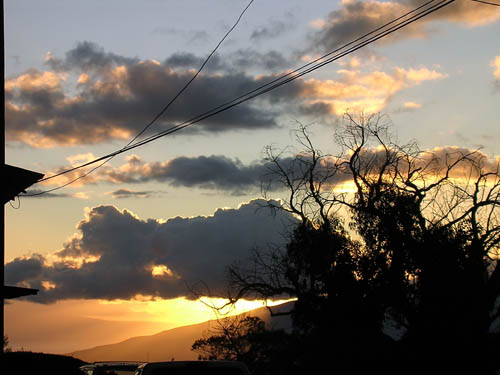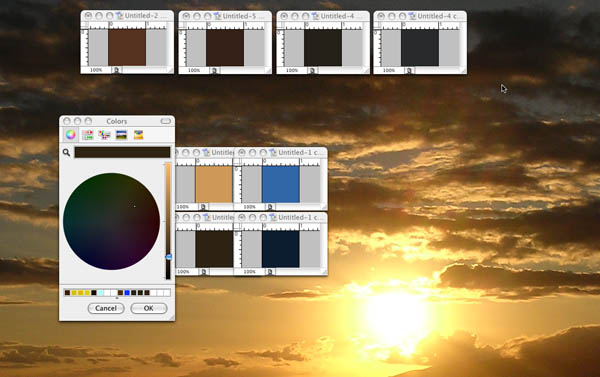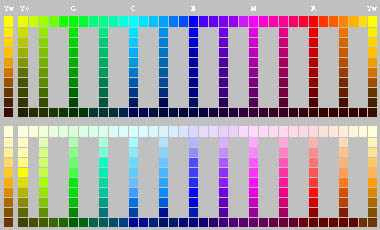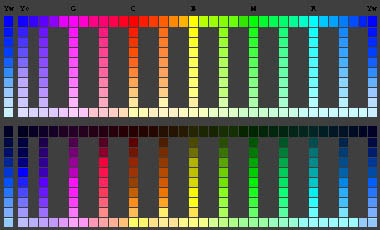|
All colored objects shadow colors are on the way to dark neutral no matter what the local color is, the opposite color is used to darken it. I'll use a green local color as an example, magenta is the opposite color of green. Adding magenta to green deepens the green until it is gone, to the same extent that magenta is now there. That makes a neutral color, past that the mixture becomes dark magenta. It is a dark transparent neutral and tints/washes to a neutral battle ship gray. Any green tree you look at in the foreground basically gets dark in this way. Sometimes the skies reflection causes a sky colored shift to the local color but the deepest shadows still use the complements according to the shift. Cyan can be added into the green to show the shift to a bluer highlight color on an overcast day or yellow can be added to show where the tree is in sunlight. What I am doing as the colors are shifting is to match the light conditions by slightly changing both complements. Combining the three primaries as a triad is like combining two opposition colors, made of one primary, and one secondary color which is a combination of the second and third primaries. They neutralize, and if they are transparent colors, they become a dark neutral. When painting with a full palette there are the three opposition primary and secondary color sets and one tertiary set. One combination or another will always match the color that is being seen. 1. Magenta and green, 2. cyan and red, 3. and 4. orange and cobalt blue, and 5. Yellow and ultramarine blue by using the darkest yellow warm brown and ultramarine blue, this will mix the darkest neutral opaque, tinting to a #5 gray. Opaque bright yellow mixed with translucent ultramarine blue is a first step in subduing warm opaque yellow to a cool, but dirty, opaque yellow-green to blue-green. It's a dirty but useful green color because of the magenta hue in the ultramarine blue hue. Yellow can become darker either to the green side or the red side. As a painting artist I prefer yellow to the warm side brown pigments for mixing as the green side is easily mixed even with the warm side yellows which are; antimony lead Naples yellow and iron oxides from yellow ocher golden to raw and burnt umber. Mixing a true transparent yellow and a transparent ultramarine blue will mix a color closer to neutral path because of the transparent yellow's colors browner mass tone.
I never stay with just one color opposition throughout the painting, they change with each local color.
Last night I took a photo of the evening sky. The clouds were yellow orange and as the night pursued the clouds became orange, then red, then magenta. A nice sunset. Here are the orange clouds and the shadowed dark clouds with the cobalt blue opposition being the shadow color. The darkest dark in the clouds is just before it becomes neutral dark but still on the warm side. As the clouds became redder, cyan became the complement color to mix the dark shadowed clouds.
 The next day I photographed this image and used it to prove what I have said.  The top four color chips were color picked out of the images clouds. From the sunlit cloud to the shadowed cloud. The bottom four color chips and the colorchart show.. the lightest cloud and it's inverted or opposite color and these two colors darkened. That's orange and cobalt blue.  My color wheel is correct, it matches natures colors in every instance of every color, nature is perfect. This is my Real Color Wheel to share because I believe it is right. 
|
